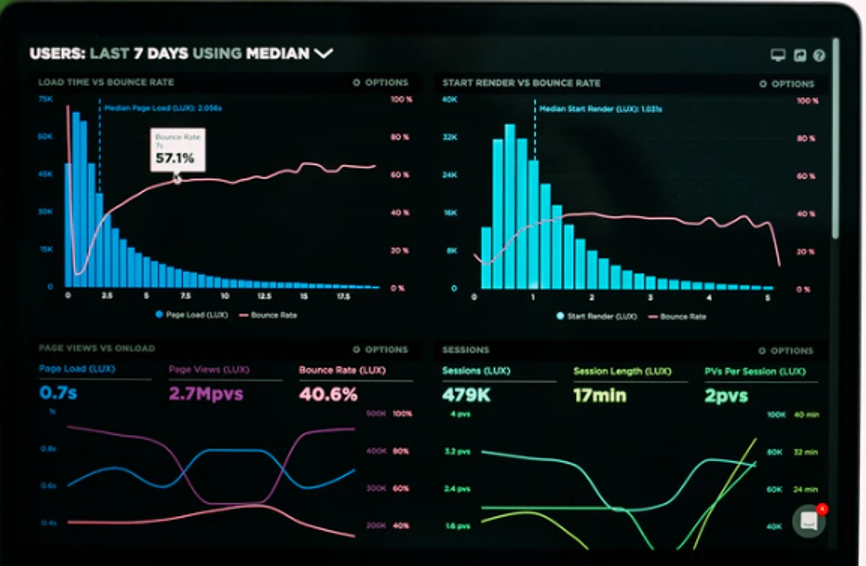Do you know how to measure the effectiveness of your social media marketing strategies? Are you aware of the best metrics for analyzing your social performance?

In the present article, we will let you know common key performance indicators in social media marketing. They help you analyze your marketing campaigns and enhance the results for your business.
1. Reach
This indicator is equal to the total number of users that have visited a specific post. Post reach is significantly affected by the posting schedule. Posting content at peak hours increases the chance of getting maximum exposure.
You can also define post reach in percentage which is equal to the number of post views divided by the total number of followers multiplied by 100.
This form of defining reach is more useful because it lets you know how well your posts are reaching your followers.
2. Impressions
The impressions is actually the total number of times that your post has been seen by people on their feed or timeline.
In fact, the difference between reach and impression is that the visitors should not necessarily click the post. So the number of impressions is usually greater than the followers because a single post can be seen several times by different followers.
Additionally, in some social media platforms like Twitter, you can easily retweet your previous posts again and again. This can increase the impressions and let your content be seen by more users.
3. Audience growth rate
Another important social media KPI is the rate at which your followers are increasing. The audience growth rate is important when you want to track the effectiveness of your audience reach.
In fact, a significant purpose of each marketer on social media is to increase the number of organic followers. Many different approaches might be taken by marketers to do this task. To know how well you are doing in this job, you need to use this KPI.
The audience growth rate is usually measured at the end of every month to know how well your strategies are working in that month. The growth rate is also defined in percentage to estimate it considering the total number of followers.
4. Mentions
Mentions indicate how well your brand’s voice is contributing to your niche market. In other words, you need to know your social share of voice to measure your brand exposure on social media niche conversation.
It actually determines the visibility of your brand among all other competitors. The position of your brand compared to other competitors can be defined by this KPI. The more your content be shared and mentioned, the more famous your brand is.
This KPI can also be defined in percentage to compare your results with the total mentions of your competition.
5. Engagement rate
Engaging with niche audiences is one of the most important tasks of marketers. Any reaction such as likes, comments, shares, saves, etc. can be an indication of engagement.
The engagement rate measures the total number of engagements of a single post. Different social media platforms might have defined this KPI a bit differently.
For example, Twitter defines it as the total engagements divided by total impressions. Instagram, on the other hand, measures it by dividing the total engagements by the number of followers.
By the way, it is a measure of how well your audience is interacting with your content. A high engagement rate signifies a deep and promising relationship with niche audiences.
This is where brands are ready to spend masses of money to prove that they are popular among their niche community.

6. Amplification rate
Keep in mind that you might encourage many users to follow your accounts on social networks. But it is not easy at all to convince them to share your content.
Sharing content is the most important reaction users might have about a social post they enjoy. Many marketers are not successful at getting shared and this is why you need to use this KPI.
The amplification rate is actually defined for this purpose. It lets you know how many times your content is getting shred compared to the number of followers (or impressions) you have.
7. Conversion rate
The final goal of social marketing is usually boosting sales or at least subscriptions to your newsletter or downloads of your software demo.
These will be achieved through redirecting social users to your desired URL. The number of clicks on your links is another important factor which shows you the effectiveness of your social activities.
Of course, not all clicks will lead to the desired action. The conversion rate measures the total number of conversions (desired actions) divided by total clicks.
A high conversion rate definitely means that users are making the desired decision not just seeing your page.
Final thoughts
We introduced 7 top social media KPIs necessary for every marketer. Of course, if you want to be successful in digital marketing, you might need more metrics to analyze your performance. CTR and CPC, for example, are very common among marketers. Also, becoming familiar with social media analytics tools is very useful to be able to track these metrics.

